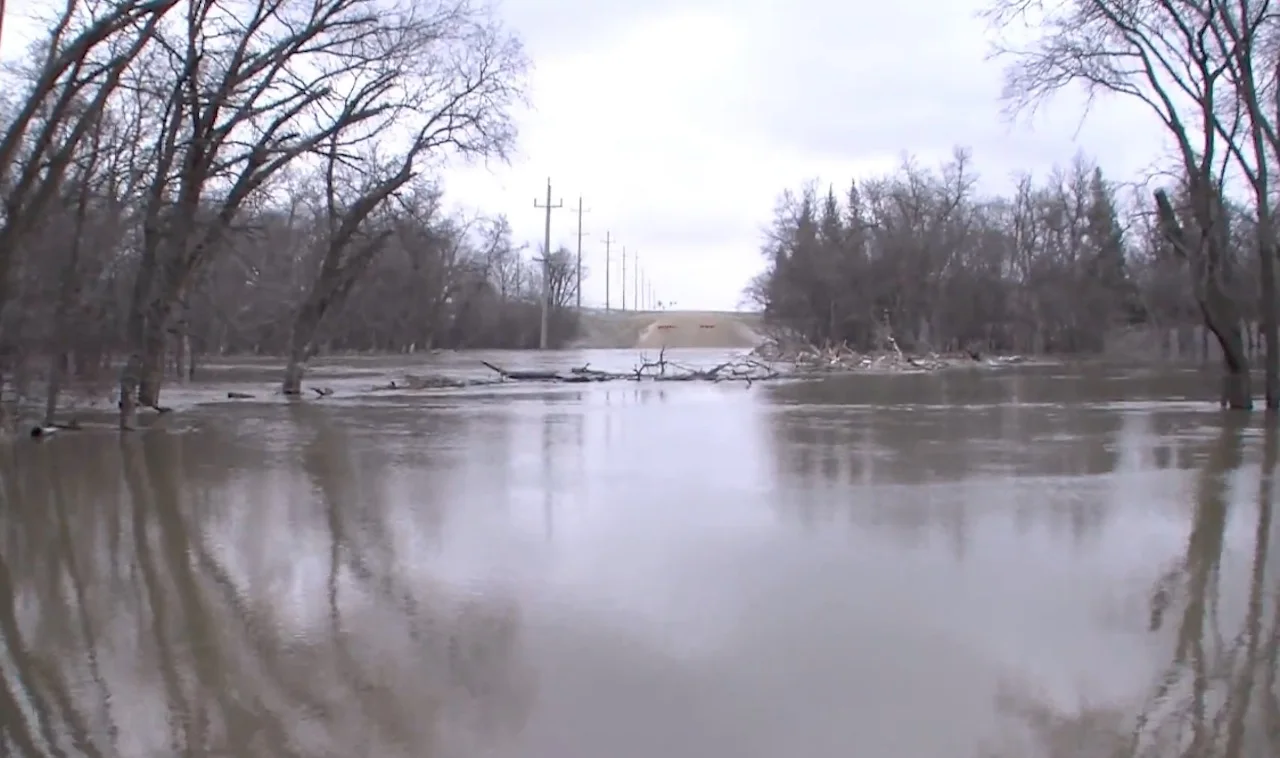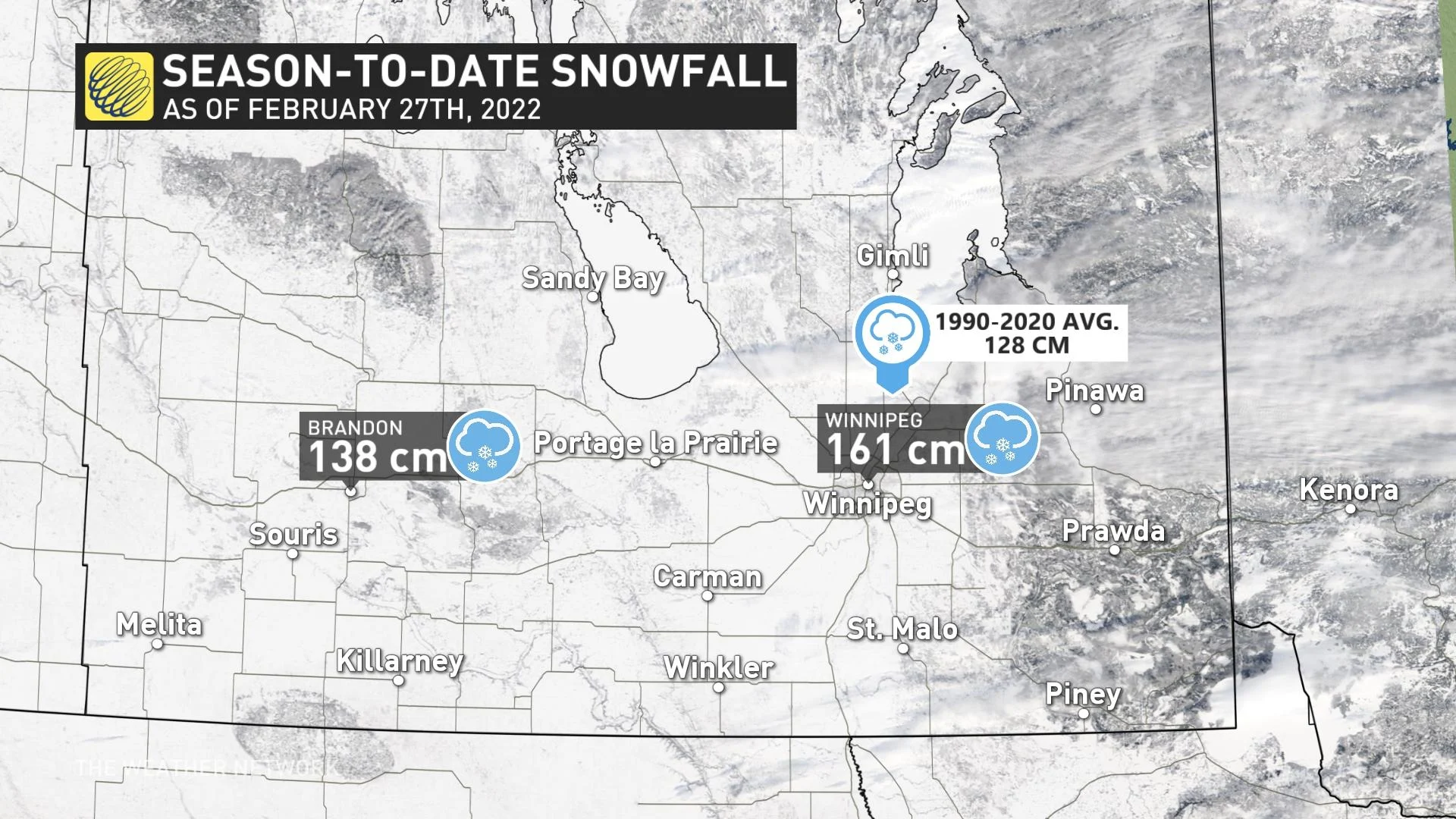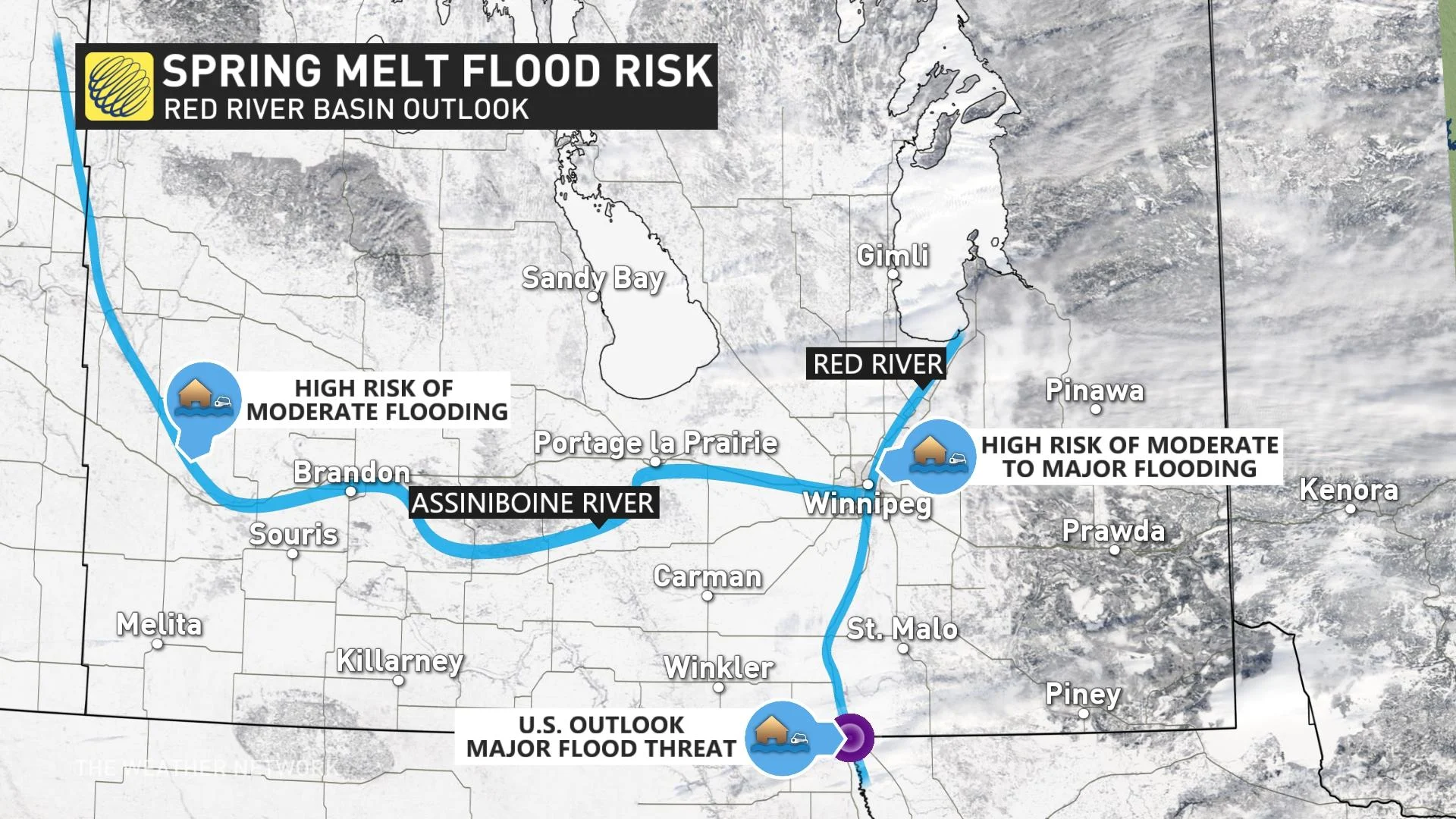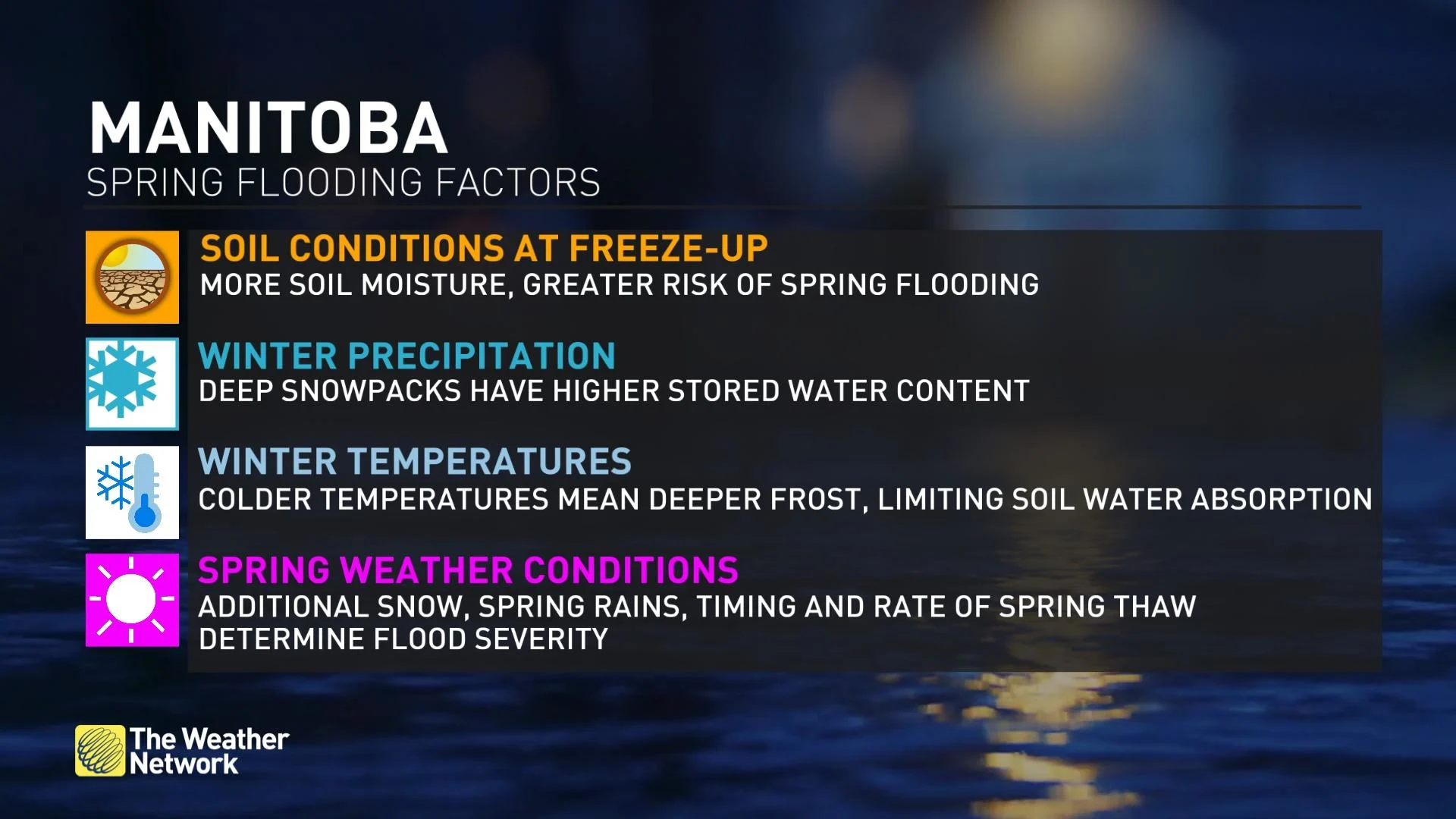
Clipper conveyor belt bolsters spring flooding risk in Manitoba
The American and Canadian sides of the Red River have a boosted risk for spring flooding this year, due to a few factors including a higher than normal amount of precipitation and clippers tracking across.
Numerous Alberta clippers that trekked across the Prairies this winter have helped set the stage for a heightened potential for moderate spring flooding in Manitoba.
According to the National Weather Service (NWS) Grand Forks bureau, the Red River has been impacted by 11 clippers this season, six of which have intensified into blizzard events. The tally is near the seasonal average of 12, according to a study, with a median of 1-2 clippers occurring every week in 2022 since Jan. 7.
"However, we typically average around five impactful clipper events during the months of January and February, so the persistence of this pattern during January-February months is very unusual," NWS Grand Forks said.

Visit our Complete Guide to Spring 2022 for an in-depth look at the Spring Forecast, tips to plan for it and much more!
The NWS characterizes a clipper as a fast-moving low-pressure system that moves southeast out of Alberta through the Plains, Midwest and Great Lakes region, usually during the winter.
The chance of significant snowmelt flooding is also moderately high on the U.S. side, running "somewhat above" long-term historical averages across the Red River and Devils Lake basins, according to NWS.
HIGH CHANCE OF 'MODERATE' FLOODING IN MANITOBA
In its February Outlook Report, the Hydrologic Forecast Centre (HFC) of Manitoba Transportation and Infrastructure stated there is an elevated potential of moderate spring flooding in most southern Manitoba basins.
"Water levels are expected to remain below dikes and community flood protection levels at all locations. The risk of flooding could change depending on weather conditions between now and the spring melt," the centre said in the report.

As a result of above normal to well above normal winter precipitation through mid-February, the Red River and tributaries including the Roseau, Rat and Pembina rivers, are at a high risk of moderate to major flooding. So far, cities such as Brandon and Winnipeg have seen 126 per cent of of their average snowfall, with still a couple months left of accumulating snow possible.
Meanwhile, below normal soil moisture at freeze-up and normal to well above normal winter precipitation has led to a high risk of moderate flooding in the Assiniboine River and Souris River basins, stretching along the Whiteshell Lakes vicinities. The chance of spring flooding is low for the Interlake and northern Manitoba regions.

"Most of the major lakes are below normal levels for this time of the year, and within or very close to their operating ranges heading into the spring runoff. The risk of flooding for most lakes is low. Most lakes are expected to be within their desirable ranges after the spring runoff," the report stated.
SOIL MOISTURE A SIGNIFICANT FACTOR
Soil moisture at freeze-up is considered to be one of the major factors that affects spring runoff potential and flood threat, the centre said. Because of normal or below average summer and fall precipitation, the current soil moisture at freeze-up is lower than usual for most Manitoba basins.
"The magnitude of the spring runoff on Manitoba’s rivers is still very dependent on weather conditions from now until the spring melt and during the spring melt period," the outlook said.

It further added that the chance for runoff is substantially impacted by the amount of additional snow, rain and frost depth at the time of the runoff, as well as the rate of and when the spring thaw takes place, including the occurrence of peak flows in Manitoba, the U.S., Saskatchewan and Ontario.
"A late thaw and spring rainstorms could result in a rapid snowmelt that increases overland flooding and flows on tributary streams and larger rivers," said the HFC.
Thumbnail courtesy of Chris D., taken in La Barrierre Park in Manitoba in May 2013.
Follow Nathan Howes on Twitter.











